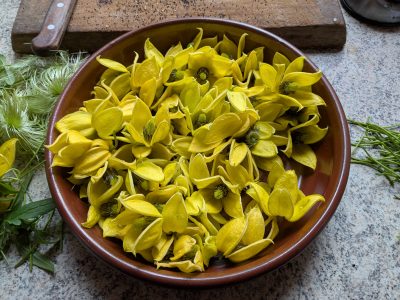 I was at Steinway Hall in London the other day to try some pianos for a recording project later this year (of which more news soon).
I was at Steinway Hall in London the other day to try some pianos for a recording project later this year (of which more news soon).
Chief technician Ulrich Gerharz had helped me – after discussing the repertoire and the venue – to whittle the choice down to two particular grand pianos belonging to Steinway’s hire stock. On any given day, one or both of the pianos might be elsewhere if someone had hired them for a concert or recording session. I don’t live in London, so it was obviously hard for me to try them one at a time as they returned to base. Lining them both up in the basement of Steinway Hall on a day that I was in London was a jigsaw, but eventually it slotted together.
Trying different pianos side by side can be a bewildering task. Some pieces sound great on one piano, some on another. Some pianos suit 18th century repertoire, others 19th century repertoire, and occasionally you get a piano that seems to be comfortable with everything. One piano would clearly be good for a concerto, while another is more suitable for an intimate recital programme. You have to assess both the sound and the touch. This too can tie your brain in knots, because sometimes the touch feels heavy but the sound is good, or the touch feels responsive but the sound may be light. Assessing the touch is a subtle matter. I look, or rather feel, for a piano whose keys seem able to respond minutely to my intentions.
I admit that there’s an element of ‘The Princess and the Pea’ about all this. Nevertheless, pianists can’t help becoming very sensitive to small differences.
People often assume that pianos of the same make and age must be practically identical, but the instruments may have been worked on differently by different technicians. They may have been set up to project the sound to the back of a large concert hall. They may have been altered to suit the demands of a particular pianist. They may have new hammers, new felts on the hammers. The key surfaces may feel different, according to how much they have been played, or what material they’re made of. Even the pedals can feel different – some pedal actions smooth and easy, others a little heavier or harder to control. You don’t want to have to consciously think about such things when you’re playing.
Both pianos were lovely, but it didn’t take me long to decide which I liked better. With one piano, it felt as if I had to understand it. With the other, it felt as if it understood me.




I wonder if the pleasure violinists, for example, have at being able to always play their own instruments and really get to know them is sometimes outweighed by envy of pianists who can play on a wide and interesting range.
Interesting question, James – though I’ve always thought that violinists (for example) feel sorry for pianists who have to play a different instrument on each occasion. It must be amazing to have a particular instrument that you love and know you can carry around with you and play at every concert. On the other hand, being a pianist means that you have to cultivate a flexible mindset, which can be useful in non-musical ways too.
To always play on your own instrument must indeed be very special. One downside though is shown by the many horrendous airport experiences reported on social media by Steven Isserlis as he tries to check in and protect his precious cello!
Yes indeed, what an saga he has had – and so many infuriating repetitions of check-in problems.
I have a real bugbear with out of tune pianos and poor instruments on recording sessions. It can really put me off a recording where other musicians are on top form. I think the prime example is on some of the live Eric Dolphy recordings where Mal Waldron was given a dreadful piano to play on. This is a problem that has even manifested itself on some vintage recordings at the Van Gelder studios and , whilst so much of an issue today where the many jazz musicians have contracts with the likes of Steinway and Yamaha, I have still bought albums in 2000’s where the piano chosen was a very poor instrument.
My favourite story about duff pianos concerns the big band led by the great jazz pianist Earl Hines in the early 1940s. They played a gig at a club and the piano was so dreadful that the members of the band were incensed that it made Hines sound terrible. Under the instigation of the band’s singer Billy Eckstine, the sidemen took their revenge. The club owner was surprised to see the band members gathered around the piano after the gig but he later discovered that they had severed all the strings with wire cutters so that no one would have to suffer than piano again.
Very interesting story, Ian. I agree that jazz pianists often seem to be expected to play sub-standard instruments. It’s always annoyed me that some people, on hearing a poor or out-of-tune piano, think it’s the player who is making it sound like that!
In his wonderfully funny Hollywood memoir Andre Previn writes of a jazz club owner he knew who having received complaints about the piano by a string of illustrious players “finally gave in and had it painted.”
That’s a great story, James – I must remember that!
The book ‘No Minor Chords’ is stuffed with brilliantly told anecdotes of Previn’s years in Hollywood, from beating Schoenberg at ping pong to acquiring “the only set of Mozart’s letters in existence stolen and signed by Lenny Bruce.” Highly recommended.